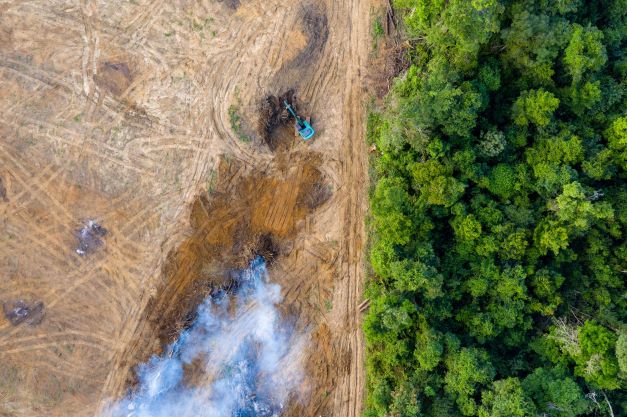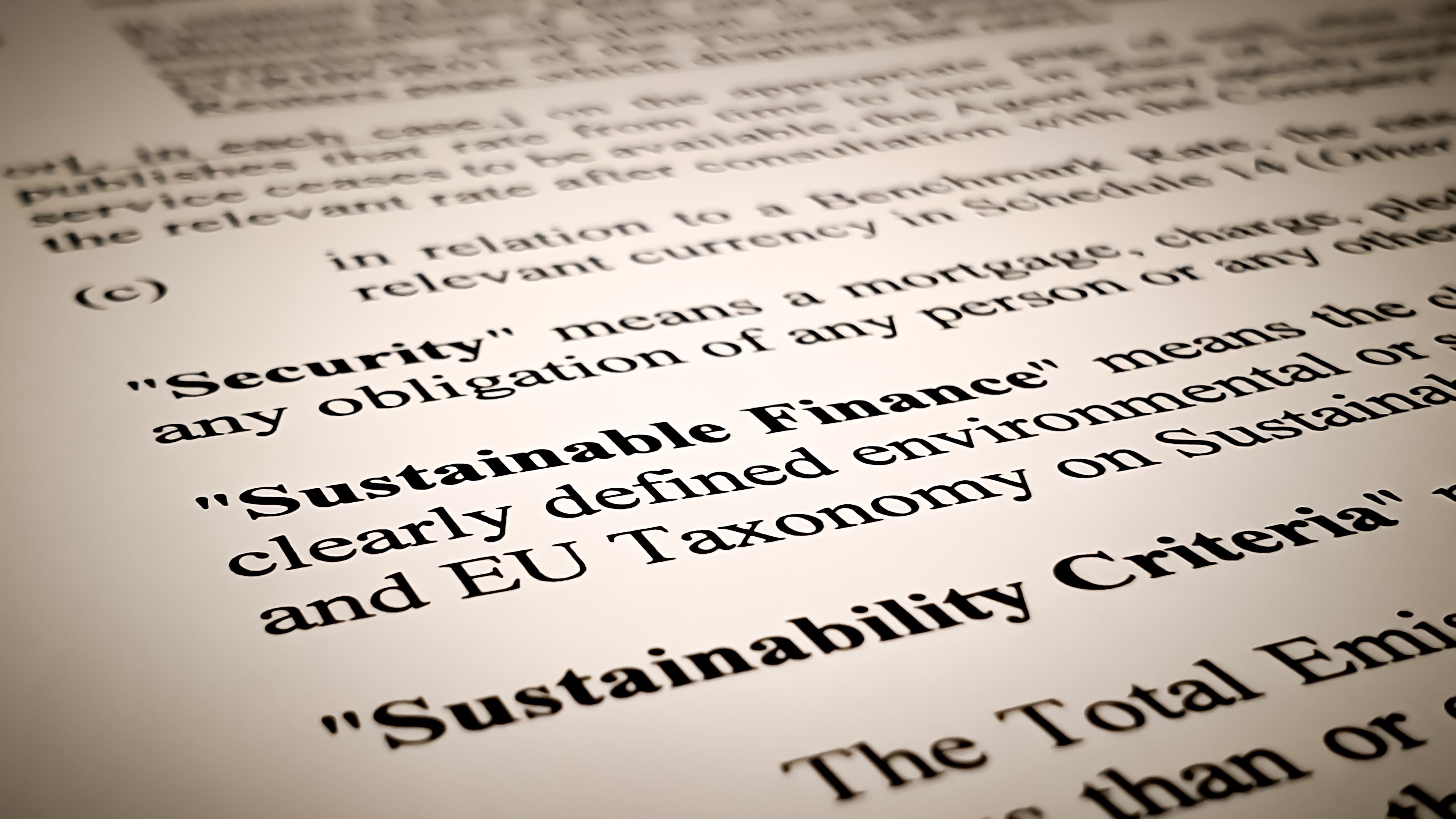Sustainable development includes investment that takes into consideration the most critical issues facing the globe such as poverty, climate change, environmental degradation, peace and justice.(1) Under the broad umbrella of sustainable finance, investments based on Environmental, Social and Governance (“ESG”) factors have already become embedded in institutional investment led by some of the largest fund allocators in the world like, BlackRock, and Lazard. These stakeholders have the power, as among the largest shareholders, to demand changes in corporate structure, processes and investing. And they can make these demands directly to the C-Suite and the board level -and they are doing so.
There is the realization by many of the largest investment allocators and the investing public that capital flows have an impact on ESG factors and more broadly, there are environmental and social costs of economic activity that cannot endlessly be unpaid, passed on, or left for future generations to bear. These costs will affect and have a real risk upon the financial markets and the global economy.

While estimates vary, the amount of assets in the global market focused on ESG factors is estimated to exceed $53 trillion by 2025, representing over a third of all global assets under management.(2) Morgan Stanley’s Institute for Sustainable Investing released a report comparing almost 11,000 mutual funds from 2004 to 2018 and found that the there was no trade-off in returns between sustainable funds and traditional funds. (3) The report also revealed that sustainable funds may lower risk-experiencing a 20% lesser downside deviation than traditional funds.
On June 18, 2020, the European Council announced the signing into law of the EU Taxonomy Regulation ((EU) 2020/852 on the establishment of a framework to facilitate sustainable investment, and amending Regulation (EU) 2019/2088”). (4) The Taxonomy Regulation is an EU-wide glossary or “taxonomy” system intended to determine if an economic activity is environmentally sustainable for investment purposes. This regulatory regime classifies which activities are “green.”
On March 10, 2021, the European Union’s Sustainable Finance Disclosures Regulation (“SFDR”) went into effect with some of its provisions being phased in over time. The SFDR’s main purpose is to compel sustainability disclosure by companies, asset managers, insurers, pension funds, financial products, advisors and benchmarks. The SFDR requires disclosure along three principal tracks: 1) how sustainability risks are managed; 2) the principal adverse impacts (PAIs) an entity’s activities and investments will have on sustainability; and 3) evaluation of an entity’s ESG credentials.
The SFDR is the centerpiece financial regulation of the European Union’s Sustainable Finance Action Plan which seeks to achieve carbon neutrality by the year 2050 in accordance with the European Commission’s European Green Deal (“Green Deal”)- announced by the European Commission in 2019. The purpose of the Green Deal is to combat climate change.
The SFDR’s PAI disclosures are intended to allow transparency so that investors can steer capital to companies making sustainable investments.
The SFDR affects all investment and portfolio management firms including, Undertakings in Collective Investment in Transferable Securities (“UCITS”), Alternative Investment Fund Managers (AIFMs), venture capital and private equity firms, investment firms, sub-investment management firms, and other any firm providing investment management and portfolio management advice in the EU, and firms that do business with them.

The degree to which investment funds and portfolio management firms are subject to regulation and disclosure depends on which three of the following types of financial instruments they are dealing in. Article 8, or “light green” products promote ESG characteristics but may or may not be sustainable investments. Article 9, or “dark green” products, have sustainable investment as their goal. And lastly, Article 6 products are neither. An example of an Article 6 firm maybe a investment advisor or trading firm that may provide market liquidity, but does not make any investments in anything over a sufficiently long time horizon.
By the end of 2021, investors will be able to discern through standardized templates for disclosure, on their websites, prospectuses, and key documents, how Article 8 and Article 9 firms meet their stated ESG and sustainability initiatives and goals.
Over time, benchmarks and indices will likely further gauge this performance and disclosure according to independent third party standards. Also in time, the regulations will be refined and will evolve given the large number of agencies and bodies that are working on this such as the Corporate Sustainability Reporting Directive (“CSRD”), the CDP (“Carbon Disclosure Project”), IIRC and SASB (“Value Reporting Foundation”). The European Supervisory Authorities (ESAs) (the European Securities and Markets Authority (“ESMA”), the European Insurance and Occupational Pensions Authority (“EIOPA”) and the European Banking Authority (“EBA”)) will likely further provide guidance on standards and benchmarks.
The SFDR is likely to evolve and it is already fairly complex. What would make the SFDR even more effective over time, is the adoption of benchmarks, and more standardized taxonomy of what the term sustainability itself means among parties. It will also be beneficial to know how ESG factors are understood across all market participants. The last component of greater transparency in terms of sustainability metrics and disclosures is an accounting profession that is able to audit and referee all of the above so that disclosures can be effectively audited.
The UK is working on its own sustainability regulatory framework.
By contrast, in the United States, neither the Commodity Futures Trading Commission ("CFTC") nor the Securities and Exchange Commission ("SEC") have issued any mandates for ESG disclosure. Both regulators do however have existing regulations that prohibit misleading and false statements about investments which have been deployed to combat the practice of “green-washing.”
Green-washing is when public companies or investment firms make misleading claims about their ESG or sustainability investments and practices. Some firms argue that accusations of green-washing are misplaced in that the absence of a commonly adopted taxonomy and system of measurement or benchmarks necessarily leads to accusations of green-washing. On August 24, 2021, it was revealed that the SEC is investigating Deutshce Bank’s asset management arm, DWS Group, after comments by a whistleblower, Desiree Fixler, a former chief sustainability officer at the firm, that DWS was overstating the use of ESG criteria in their annual report.(5)
On March 4, 2021 the SEC announced the creation of a 22 member Climate and ESG Task Force in the Division of Enforcement to target ESG related misconduct, including greenwashing.(6) On March 15, 2021 the acting chair of the task force, asked for public comment and input from the financial markets on what ESG disclosures should look like. During the 90 day comment period over 400 comments were received with the majority of them calling for ESG disclosures.(7)
One obstacle to the growth of sustainable finance, which will in time likely be resolved, is the lack of benchmarks and metrics to evaluate ESG data. In 2020, BlackRock conducted a survey of 425 investors from 27 countries, representing $25tn in assets under management who expressed interest in better ESG data and analytics. The survey participants also stated that they expected their assets in sustainable investing to double in the next five years. (8)
The demand for sustainable investing will undoubtedly grow, as will regulation and enforcement actions around green-washing. From a liability perspective, investment firms would be well advised to seek careful and full disclosure of sustainability risks.@
R Tamara de Silva
Footnotes:


